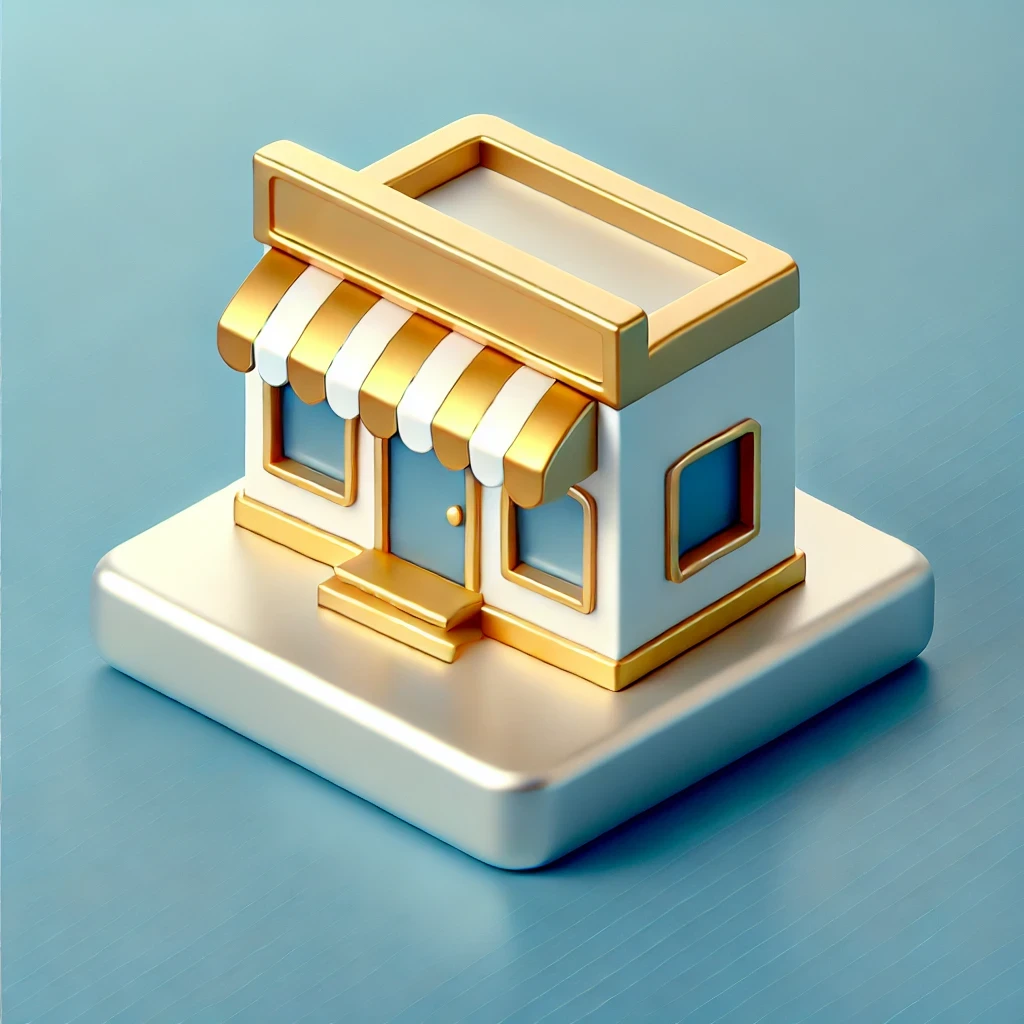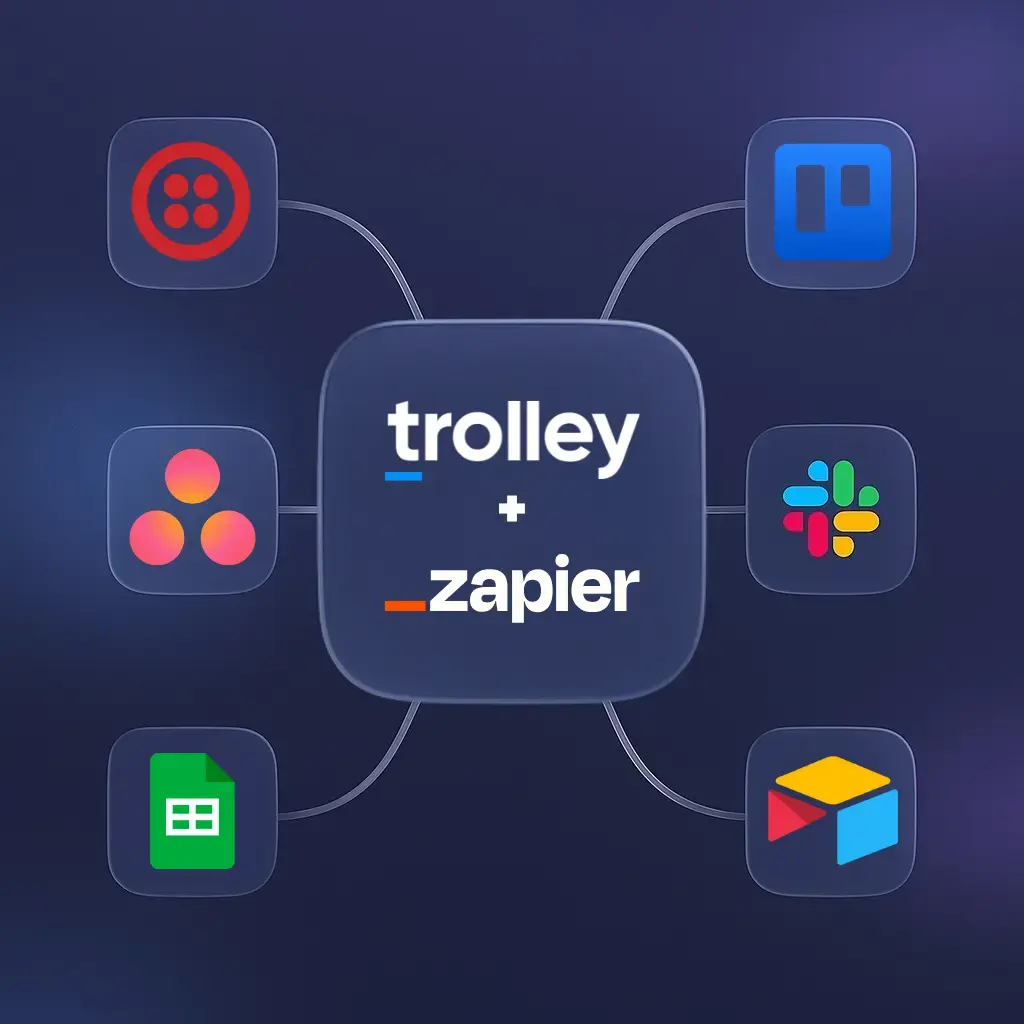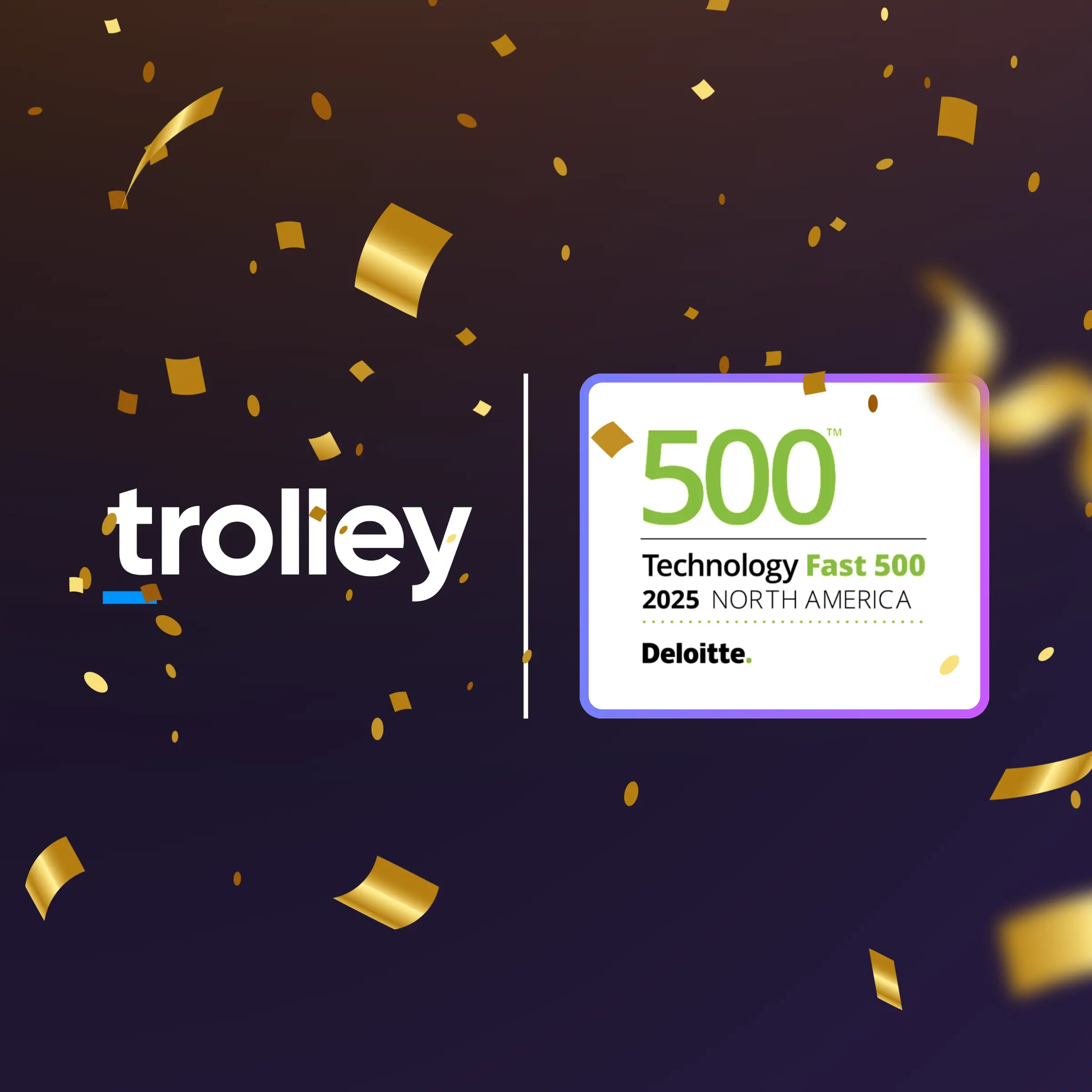Curious about how two-sided marketplaces like Airbnb and Uber achieve success? This guide dives into the essential components, benefits, and challenges of these platforms, and showcases real-world examples. Learn how Trolley’s solutions can streamline operations and enhance efficiency for your marketplace.
Commerce has connected buyers and sellers since the dawn of time.
In this modern era, there are plenty of ways to sell online, like brands selling directly to consumers. However, the two-sided marketplace model, where buyers and sellers come together via a marketplace middleman, has proven to be a highly successful innovation of the digital age.
The internet has transformed the world, and likewise, the two-sided marketplace has revolutionized commerce, allowing people to buy and sell more than ever imagined possible.
For example, Airbnb, which allows homeowners to rent their properties to travelers, made $9.92 billion in 2023. Similarly, Uber lets drivers provide rides for passengers and generated $37.92 billion in the same year.
In this guide, we’ll explore what defines a two-sided marketplace, examine their relevance in modern commerce, and understand what makes them thrive.
What we cover
What are two-sided marketplaces?
Before we continue, it is best to define what exactly a two-sided marketplace is so that we’re on the same page.
A two-sided marketplace is an online platform that connects two distinct user groups who can provide value to one another, typically buyers and sellers, enabling them to interact and transact.
Most commonly, this involves:
- C2C (Consumer-to-Consumer) Marketplaces: Enable peers to sell goods and services to one another.
- B2C (Business-to-Consumer) Marketplaces: Connect companies with end consumers.
- B2B (Business-to-Business) Marketplaces: Facilitate trade between two businesses.
The platform facilitates these exchanges by providing tools for listing products or services, handling payments, and ensuring trust and security between parties. It often generates revenue through commissions or fees, typically a percentage of transactions. Others rely on advertising or partnerships.
Why are two-sided marketplaces so successful?
Two-sided marketplaces have revolutionized commerce in the last few decades by providing clear benefits to both buyers and sellers. For buyers, these platforms offer unparalleled convenience, a wide selection, and affordability. Advanced search tools and filters make it easy to find desired products, while ratings help identify the best and most reliable sellers.
For sellers, two-sided platforms provide access to a vast customer base, enabling small businesses to reach shoppers globally. These platforms also simplify processes by handling marketing, payments, and order fulfillment, thereby reducing overhead costs.
The success of this model is evident across various industries. Homesharing services like Airbnb and VRBO have transformed the travel sector, while ridesharing apps like Uber and Lyft have disrupted transportation.
Even traditional direct-to-consumer businesses like Amazon and Walmart are increasingly adopting a marketplace approach, recognizing the immense value in connecting third-party sellers with their extensive customer bases.
For marketplace owners, this business model is particularly attractive. Instead of selling their own products, they provide the platform and let buyers and sellers interact. As the marketplace grows, so do the profits, without the scalability issues faced by traditional businesses.
Core components of a two-sided marketplace
While models vary, two-sided platforms have some elements in common. Let’s examine the anatomy of a two-sided marketplace and the core components that make it happen.
The primary user groups: Buyers & sellers
At the heart of any thriving marketplace, online or offline, are the two primary user groups: the buyers and the sellers. These are the folks who generate almost all the activity on the platform, engaging in a continuous dance of supply and demand.
Buyers
These are users in search of a particular product or service. They come to the marketplace for the convenience, the options, and the competitive prices.
But it’s not just about scoring a sweet deal. Buyers also enjoy a sense of trust and security that comes with purchasing through an established marketplace. For instance, protection policies help ease any worries.
Platforms cater to this by simplifying purchasing with buyer tools like:
- Search filters to quickly discover listings
- Sorting to view products by price, ratings, etc.
- Secure payment processing
- Review systems to identify quality sellers
- Protection/refund policies
In most cases, users must create an account with some basic info—name, payment preferences, etc. Some marketplaces may request additional details like a shipping address or communication method of choice.
Sellers
On the other side of the platform are sellers. These can be individual vendors or larger businesses looking to market & sell their wares to a broader audience.
Like buyers, sellers usually need to set up an account and provide details about themselves or their business, product offerings, and payment information. They may also gain access to handy tools for managing listings, communicating with buyers, and tracking sales.
Key features for sellers include:
- Self-service dashboards to manage listings, inventory, and orders
- Promotional tools like coupons to boost sales
- Communication channels to interact with customers
- Reporting to gain insights into product performance
The role of the platform in facilitating interactions
The central aspect of the two-sided marketplace concept is, obviously, the platforms themselves.
The marketplace platforms create value by bringing together buyers and sellers to engage in mutually beneficial transactions. They are the glue that holds everything together, providing a central hub for everything that happens.
To do this, they focus on:
- Marketing Tools: Sellers can advertise listings to interested buyers through targeted promotional tools.
- Payment Processing: Integrated payments simplify the act of commerce. Platforms often handle payments, releasing funds when buyers confirm receipt. Some also offer purchase protection.
- Trust & Safety: Marketplaces have the tough task of fostering trust between strangers. Features like verified IDs, ratings/reviews, and screening help build this confidence. Strict policies protect users on both sides.
- Dispute Resolution: When issues inevitably occur, prompt dispute resolution ensures users feel supported. Platform teams mediate problems between buyers and sellers.
In other words, the platform facilitates an end-to-end experience—from discovery to purchase to post-sale support. It is responsible for setting the ground rules that will maintain order. It’s up to the marketplace to establish clear guidelines and police bad behavior to keep things above board.
Network effects and their impact on marketplace value
Two-sided marketplaces need sellers to attract buyers and buyers to attract the other. Solving this dilemma relies on what we call the network effect.
As more users join, more potential transactions can happen, drawing in additional buyers and sellers. More participants create more listings and demand, making the marketplace better for everyone.
That’s why you’ll often see platforms focus aggressively on user acquisition until this flywheel spins.
The advantage of the two-sided marketplace model
The two-sided marketplace model offers several compelling advantages for businesses:
Increased access to a broader customer base
One of the most significant benefits is the ability to reach a larger pool of potential customers.
In a two-sided marketplace, sellers act as a built-in marketing force, promoting their offerings and driving traffic to the platform. This network effect means that as more users join, the marketplace becomes increasingly valuable for both buyers and sellers. Sellers gain exposure to a growing audience, turning the marketplace into a powerful lead generation tool.
Enhanced efficiency in matching buyers and sellers
Two-sided marketplaces excel at efficiently connecting buyers with sellers.
Algorithms and advanced search functions streamline the process, ensuring that customers find the products or services they need quickly and easily.
This efficiency benefits both parties: buyers save time, and sellers reach interested leads without extensive marketing efforts. This dynamic not only boosts customer satisfaction but also encourages repeat business and referrals, increasing transaction volume and marketplace profitability through transaction fees.
Scalability and growth potential
The two-sided marketplace model is inherently scalable. Unlike physical retail stores, which require significant resources to expand, a marketplace can grow rapidly by simply onboarding more sellers.
This scalability allows for quick user growth and the ability to expand into new geographic areas or product categories with minimal overhead. As the platform gains reputation and influence, it attracts larger and more reputable sellers, further enhancing its growth potential.
Opportunities for innovation
Two-sided marketplaces thrive on innovation, driven by their reliance on software and algorithms.
This opens near-limitless possibilities for enhancing user experience through new features, AI-driven search and recommendations, and even the integration of emerging technologies like blockchain and cryptocurrency.
Competition among marketplaces drives continuous improvement, while competition among sellers fosters creativity and innovation in product offerings, pricing strategies, and customer service.
Sellers are motivated to differentiate themselves and retain their market share, continually pushing the boundaries of what the marketplace can offer.
Overall, the two-sided marketplace model provides businesses with expanded reach, efficient matchmaking, scalability, and a fertile ground for innovation, making it a highly attractive business strategy.
Challenges faced by two-sided marketplaces
There’s no denying that the marketplace model offers plenty of exciting benefits. Yet, like anything else, it’s not all smooth sailing. Businesses entering this space should be prepared to navigate some common challenges.
Achieving critical mass and balancing supply and demand
For any two-sided marketplace, the main priority is to reach critical mass—that crucial tipping point where there are enough buyers and sellers to sustain rapid growth. Until critical mass is achieved, attracting users is difficult. That’s because buyers find limited product selection, and sellers see inadequate customer traffic.
Strategies to address this chicken or egg problem include
- Subsidizing early adopters
- Seeding initial listings
- Focusing on a niche industry where targeted marketing can attract specialized buyers and sellers.
Marketplaces must strike the proper equilibrium where demand matches supply. An oversupply of sellers leads to excessive competition and downward pricing pressure.
Ensuring quality and trustworthiness
While building a marketplace, your reputation is on the line with every transaction. As such, another persistent concern is providing adequate quality control over marketplace offerings.
With a slew of sellers, it’s impossible for the platform owners to manually keep an eye on each one. That creates a risk of counterfeit or fraudulent listings. Which, in turn, leads to negative experiences that erode customer trust and loyalty.
Marketplaces should invest in building tools and policies to remove bad actors and reward legitimate businesses that deliver consistent quality.
Common tactics to address this include
- Peer reviews
- Seller ratings
- Guarantees and refunds
- Stricter vetting processes for sellers.
Navigating competition and potential platform monopolies
As marketplaces scale, they risk becoming victims of their success. “Whales” take the form of a few dominant sellers monopolizing the platform. With their brand recognition and resources, these mega-sellers can block smaller businesses from gaining traction.
Platforms might consider implementing safeguards like limiting seller size and promoting new sellers. However, this risks pushback from their biggest revenue drivers. The solution lies in striking a balance between quality control and keeping top performers happy.
The platforms themselves also face threats from emerging monopolies. A ridesharing startup will struggle against the Ubers and Lyfts of the world and their brand power. New entrants must strategically carve out a defensible niche or specialization that protects them from acquisition.
Real-world examples of two-sided platforms
Two-sided marketplaces have exploded in popularity across a range of industries. If you’re in search of some inspiration, look at these case studies and explore how they achieved this level of success.
E-commerce platforms
Amazon and eBay are the quintessential examples of two-sided e-commerce. They’ve revolutionized online shopping by connecting customers to sellers offering every product imaginable. With features like free shipping and purchase protections offered by these digital storefronts, they have become the go-to for millions of shoppers.
Social media platforms like Facebook have also jumped into e-commerce with native marketplaces that allow users to buy and sell items. Given their billions of existing users, these marketplaces have exploded seemingly overnight.
Service platforms
The runaway success of Uber and Airbnb ushered in a new era highlighted by service aggregator platforms. Uber’s ridesharing model has been replicated for food delivery by themselves in UberEATS, and by competitors DoorDash and Just Eat/GrubHub. Airbnb’s home rental platform spawned direct competitors (VRBO) and inspired adjacent service models like hospitality and event spaces (Giggster).
These services solve real-world problems by connecting supply and demand in industries where the supply was fragmented before. In addition to benefiting sellers and buyers, they’ve also created entirely new income opportunities.
Freelance marketplaces
The meteoric rise of freelancing (or the “gig economy”) has fueled platforms like Upwork, Fiverr, and Freelancer. These sites allow businesses to hire specialized talent on demand for short—or long-term projects. The model offers flexibility and income stability for freelancers. At the same time, it provides companies with access to skills without hiring full-time.
Freelance marketplaces have enabled the remote work revolution. Location is no longer a limitation since freelancers can perform their work from anywhere. And businesses get access to a global talent pool. This democratization of work is a defining outcome of these two-sided marketplaces.
Niche platforms
Highly targeted niche platforms cater to specific audiences while fostering a sense of community. Etsy connects artisans and buyers looking for specialty handmade goods. Rover helps pet owners find pet sitters and walkers. Depop allows fashion enthusiasts to buy and sell unique and vintage clothing items.
These specialized marketplaces understand their niche audiences well and tailor experiences accordingly. Niching down enables them to attract and match buyers and sellers despite operating at a smaller scale than mass market e-commerce or services platforms. Their laser-targeted value proposition gives them an edge even as they compete against giants.
Future trends and opportunities
Just like we evolved from bazaars to physical stores to online marketplaces, the evolution of marketplaces is far from over. There are exciting opportunities for businesses and entrepreneurs to tap into emerging trends and create innovative marketplace solutions.
Technological advancements
Artificial intelligence (AI) and machine learning are rapidly being incorporated into marketplaces to enhance user experiences. These technologies enable personalized recommendations, predictive analytics, and fraud detection. For example, Amazon uses AI to suggest relevant items to buyers based on browsing history.
Blockchain technology also holds great potential to make marketplace transactions more secure and transparent. Blockchain can help build trust between buyers and sellers by creating an immutable record of all interactions. We may soon see blockchain-based reputation systems that provide more reliable seller ratings.
Another technology to watch is virtual reality (VR). Imagine immersing yourself in a digital marketplace, visually browsing items as you would in a physical store. VR can recreate sensory experiences to engage online shoppers. As the technology improves and becomes more accessible, we could see VR transform how we explore and evaluate purchases in a virtual marketplace.
Emerging markets
There are always new markets to tap into, and the rise of emerging economies presents a massive opportunity for global marketplace expansion. Thanks to rising consumer purchasing power, markets like India, Southeast Asia, Latin America, and Africa have undeniable growth potential.
Alibaba has done this exceptionally well in China, becoming the dominant player and making $126.491B in 2023. Similarly, MercadoLibre ruled ecommerce in Latin America with $14.5 billion U.S. dollars for the same period.
Regulatory considerations
Regulatory challenges are bound to arise. Businesses must navigate complex policy landscapes around data privacy, consumer protection, taxes, etc.
For instance, data privacy regulations like GDPR require marketplaces to be more transparent about user data collection. They need clear consent before gathering any personal information, and strict data handling protocols must be implemented to remain compliant.
There is also a growing need for marketplace regulations that protect consumers from fraudulent sellers and counterfeit products. Leading platforms like eBay and Amazon have addressed this by establishing thorough seller vetting processes and buyer protection programs. But tighter screening and anti-fraud measures may be formally mandated.
The Trolley solution
So far, we’ve explored the incredible potential of two-sided marketplaces. We saw the challenges that come with building and scaling these platforms. But what if there was a solution that could help marketplaces streamline their operations? Boost efficiency and unlock new growth opportunities?
Founded in 2015 as Payment Rails, Trolley is a team of experts passionate about financial technology and payments. We have built an end-to-end platform to simplify and automate complex seller-related workflows for marketplaces – from global payouts to taxes and risk management.
Efficiently onboard sellers with streamlined processes
A major pain point for many marketplaces is clunky seller onboarding. But with Trolley, the process is streamlined from identity verification through to document review. You can easily collect all required info and verify sellers through Trolley’s white-labeled UI integrated into your marketplace. This saves significant manual effort for your team.
Provide reliable and faster payment options
Our global payment network spans 210+ countries and territories, enabling payouts in 135+ currencies. So, you can efficiently pay sellers no matter where they are located. We support bank transfers, PayPal, Venmo, checks, wires, etc.
By partnering with Trolley, marketplaces can reduce payout times by up to 90% and fees by up to 70%. That means happier sellers and more efficient operations for your business.
Offer a more effective platform than others
Trolley allows you to build stronger relationships with sellers by paying direct-to-bank, providing real-time account dashboards, and enabling direct messaging. Our support for 36 languages lets you offer the onboarding, payout, and tax experience in your in sellers’ preferred languages.
We also offer a unified dashboard to view payments, tax forms, and more. All payouts are screened against AML/CFT watchlists, ensuring compliance and peace of mind. And with top-notch customer support, you can rest easy knowing that help is always just a click or call away.
Tax and digital income reporting compliance
Remaining compliant should be effortless for marketplaces. Trolley makes this achievable by automating tax workflows across the US and EU. We reliably withhold taxes globally, generate and e-file required forms, and collect necessary seller info upfront.
During onboarding, Trolley collects all the necessary tax information from your sellers, whether they’re based in the US or EU. Trolley’s DAC7 compliance tools ensure you meet the new EU data collection and reporting requirements with ease.
For US-based sellers, Trolley generates signed W-8 and W-9 forms after onboarding and, at the end of the year, the platform automatically issues 1099 and 1042-S forms, saving you time and hassle.
Finally, automate your seller onboarding and data collection processes with Trolley’s DSA/INFORM Act compliance toolkits and trust solutions, bundling business verification, identity verification, and data collection to meet the requirements of the generation of compliance regulations and reduce your overall risk.
Conclusion
In summary, the future looks promising for two-sided marketplaces. By connecting buyers and sellers and facilitating transactions at scale, these platforms have transformed industries and unlocked incredible growth opportunities.
But building and managing a thriving marketplace is no easy feat. A little help from Trolley can go a long way in streamlining and simplifying the complex processes involved.
Visit Trolley’s website to discover how Trolley can transform your two-sided marketplace by making onboarding, payouts, and tax processes seamless and efficient or read about how we’ve been chosen by leading marketplaces like Envato to improve the payout experience for their more than 42,000 earning authors.







